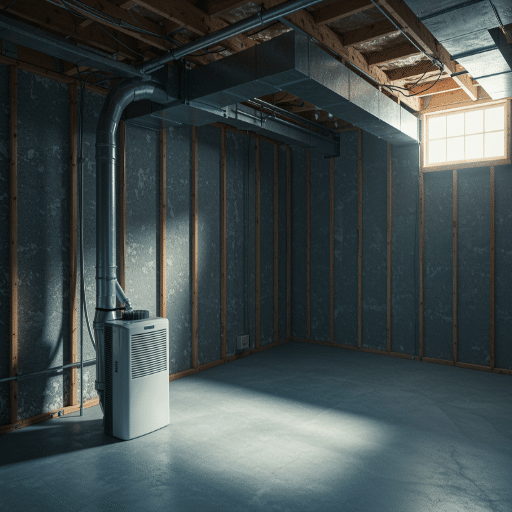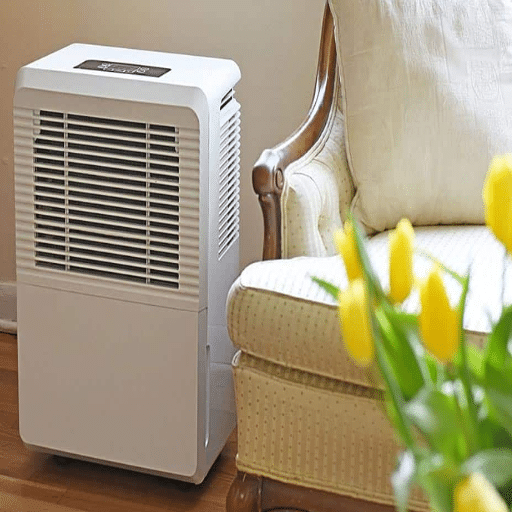Bathrooms are one of the most humid spaces in any home, and excessive moisture can lead to pesky problems like mold, mildew, and unpleasant odors. For smaller bathrooms, finding the right solution to maintain proper humidity levels can feel like a challenge. That’s where a small yet powerful dehumidifier comes to the rescue. This guide will walk you through everything you need to know about choosing the best small dehumidifier for your bathroom. From essential features to key considerations, we’ll help you make an informed decision to keep your bathroom fresh, dry, and inviting. Whether you’re dealing with persistent dampness or just want to prevent moisture buildup, this article is your go-to resource for tackling bathroom humidity with ease.
Why Do You Need a Dehumidifier in Your Bathroom?
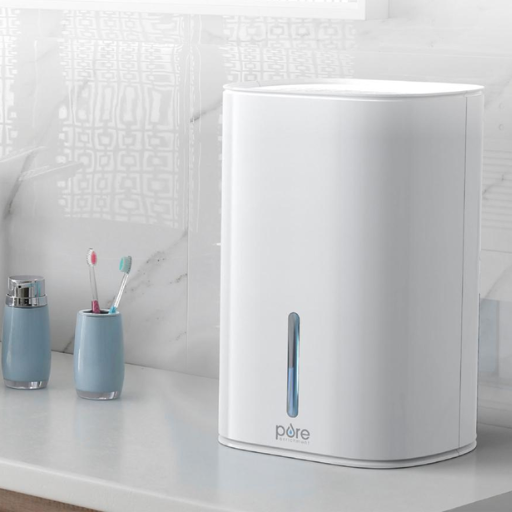
Excess moisture in your bathroom can lead to several issues, including mold growth, mildew, and unpleasant odors. A dehumidifier helps control humidity levels, preventing these problems and improving air quality. By reducing dampness, it also protects bathroom surfaces, like walls and ceilings, from damage caused by excess moisture. Ultimately, a dehumidifier ensures a cleaner, healthier, and more comfortable environment in your bathroom.
Understanding Humidity and Its Effects on Your Bathroom
Excessive humidity in your bathroom can create the perfect breeding ground for mold, bacteria, and fungi, which thrive in moist environments. Mold growth, for instance, not only damages surfaces but also poses health risks, such as respiratory issues and allergies. According to studies, indoor humidity levels exceeding 60% significantly increase the likelihood of mold proliferation, making proper ventilation and moisture control crucial.
Additionally, high humidity accelerates the deterioration of materials like paint, grout, and wooden fixtures, leading to costly repairs and replacements over time. Prolonged exposure to excessive moisture can weaken structural components, such as drywall or subflooring. Maintaining an ideal humidity range of 30% to 50% is essential to preserve your bathroom’s integrity and to ensure it remains a safe, comfortable space.
Humidity also contributes to foggy mirrors and lingering odors, diminishing the overall comfort of your bathroom. Investing in tools like a dehumidifier or an efficient ventilation fan can help regulate moisture levels, preventing these common issues while reducing the risk of long-term damage.
How a Small Dehumidifier Can Prevent Mold and Mildew
A small dehumidifier plays a crucial role in combatting mold and mildew by maintaining optimal humidity levels in your bathroom. Mold and mildew thrive in environments where humidity surpasses 60%, turning damp areas like bathrooms into ideal breeding grounds. A dehumidifier efficiently removes excess moisture from the air, keeping humidity levels within the recommended range of 30% to 50%. This helps prevent the formation of mold spores on walls, ceilings, and grout lines—areas most susceptible to moisture retention.
Modern dehumidifiers are designed to be compact and energy-efficient, often featuring advanced sensors to monitor and adjust humidity automatically. Some models can extract up to 25-35 pints of water per day, significantly reducing the risk of fungal growth in even the most moisture-prone spaces. Regular use not only safeguards your bathroom surfaces but also helps improve air quality, reducing the risks of respiratory issues caused by mold spores. By incorporating a small dehumidifier into your bathroom care routine, you invest in a long-term solution that ensures a healthier, cleaner environment.
Enhancing Air Quality with a Bathroom Dehumidifier
Modern bathroom dehumidifiers are designed with advanced technology to ensure maximum efficiency and user convenience. Many models are equipped with hygrometers that measure the exact humidity level in the air, allowing you to maintain an optimal indoor environment. Research suggests that keeping humidity levels between 30-50% is ideal for preventing mold growth and enhancing air quality. Additionally, energy-efficient dehumidifiers help reduce electricity consumption, with some units utilizing as little as 22-30 watts of power, making them both eco-friendly and cost-effective.
Other standout features include auto-shutoff sensors, which prevent water spillage when the tank is full, and continuous drain options that allow you to connect a hose for prolonged use without the need for constant emptying. Many models now operate at whisper-quiet noise levels, averaging 35-40 decibels, ensuring that your relaxation time in the bathroom remains undisturbed. Compact sizes and sleek designs also make them a perfect fit for smaller spaces.
How to Choose the Right Dehumidifier for a Small Bathroom
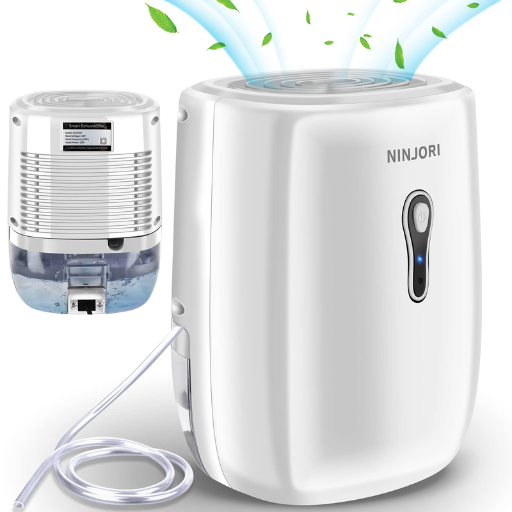
When choosing the right dehumidifier for a small bathroom, focus on these key factors:
- Size and Capacity – Opt for a compact dehumidifier designed for small spaces, with a capacity of 20-30 pints per day, which is typically sufficient for a bathroom.
- Moisture Removal Efficiency – Look for models specifically rated for high-humidity areas to ensure efficient moisture extraction.
- Safety Features – Prioritize models with auto shut-off when the water tank is full, which prevents spills and water damage.
- Ease of Use – Choose a dehumidifier with simple controls, a clear water level indicator, and an easy-to-empty tank.
- Noise Level – Select a low-noise dehumidifier (ideally under 40 decibels) to maintain a peaceful environment.
By keeping these considerations in mind, you can select a dehumidifier that effectively balances performance, convenience, and comfort in your small bathroom.
Key Features to Look for in a Dehumidifier for Bathroom
- Compact Size and Portability
Bathrooms are often limited in space, so a compact and lightweight design is essential. Look for dehumidifiers with dimensions under 12 inches in height and width that are easy to place on a countertop or in a corner without obstructing movement.
- Moisture Removal Capacity
Small dehumidifiers typically have a removal capacity of 16 to 25 ounces per day, which is sufficient for spaces up to 220 square feet. For larger or particularly humid bathrooms, opt for models capable of removing up to 50 pints of moisture per day.
- Energy Efficiency
Choose energy-rated dehumidifiers with low power consumption (typically under 40 watts for smaller units). Features such as auto shut-off when the tank is full can help save energy and lower utility costs.
- Tank Capacity
A removable water tank is standard for most models, but capacity matters. A tank with at least 1.5 to 2 liters reduces the frequency of emptying, making it more convenient for daily use.
- Automatic Features
Look for dehumidifiers with automatic humidity level controls, also known as a hygrometer. The ideal bathroom humidity level is between 40-60%, and the unit should adjust to maintain this range without needing manual input.
- Continuous Drain Option
Many advanced models feature a continuous drainage system, which allows you to connect the unit to a bathroom sink or floor drain. This is especially beneficial to avoid manual emptying in high-use bathrooms.
- Advanced Filters
Some units include antibacterial or HEPA-grade filters, which not only remove excess moisture but also improve air quality by capturing fine dust, allergens, and bacteria. Ensure filters are washable or replaceable for easy maintenance.
- Quiet Operation
Noise can disrupt the tranquility of your bathroom experience. Look for dehumidifiers with operational noise levels of 40 decibels or less, ensuring the unit doesn’t disturb relaxation or daily routines.
- Safety Features
Units with built-in safety measures, such as automatic shut-off when the tank is full or during overheating, are crucial. This prevents spills, electrical faults, or damage to the unit itself during extended operation.
- Built-in Timer Functionality
A timer allows you to schedule the dehumidifier to run for a specific amount of time, maximizing convenience and reducing energy waste, particularly for homeowners with a predictable bathroom schedule.
- Modern Design and Aesthetic
A sleek, modern design that blends with your bathroom interior is a nice bonus. Many white or neutral-colored models with minimalistic forms are designed to complement contemporary bathroom styles.
By carefully analyzing these features, you can confidently choose a dehumidifier that not only efficiently removes moisture but also enhances the overall comfort and usability of your bathroom environment.
Comparing Small Dehumidifiers for Bedroom Bathroom Spaces
When selecting the ideal small dehumidifier for combined bedroom-bathroom spaces, it’s essential to evaluate various factors such as performance, energy efficiency, capacity, noise levels, and additional features. Below, we outline the key considerations based on current trends and available product data.
1. Moisture Removal Capacity
The capacity of a dehumidifier is measured in pints or ounces of moisture it can remove per day. For smaller spaces, a model capable of removing between 12-30 ounces of moisture per day is typically sufficient. For instance, dehumidifiers like the Pro Breeze Electric Mini Dehumidifier can extract up to 16 ounces daily, making it suitable for compact bedrooms or bathrooms.
2. Energy Efficiency
Energy consumption is a critical aspect when choosing any appliance. Many small dehumidifiers are equipped with energy-saving technologies, such as auto-shutoff features that stop the device once the water tank is full. Devices like the HomeLabs Compact Dehumidifier are ENERGY STAR certified, ensuring long-term savings on electricity bills.
3. Tank Capacity and Drainage Options
The water tank capacity determines how frequently you’ll need to empty the tank. Models designed for small spaces often offer tank sizes between 16-34 ounces. Some advanced models also feature continuous drainage systems, which are convenient for reducing maintenance, especially in environments with high humidity.
4. Noise Levels
Since small dehumidifiers are intended for use in bedrooms and bathrooms, noise can be a crucial deciding factor. Units operating below 45 decibels (dB) are considered quiet enough for use during sleep or relaxation. Devices like the Afloia Mini Dehumidifier are specifically designed to operate silently, ensuring minimal disruption.
5. Additional Features
Modern dehumidifiers include extra functionalities like built-in air purification, customizable humidity settings, and LED indicators for added convenience. For instance, the SEAVON Compact Dehumidifier includes a filter that helps improve air quality while keeping humidity levels optimal.
Why Portable Dehumidifiers Are Ideal for Small Spaces
Portable dehumidifiers are an excellent choice for small spaces due to their compact design, energy efficiency, and versatility. Modern units, such as those designed for areas under 200 square feet, are specifically engineered to manage high humidity levels effectively without taking up much room. This makes them ideal for bedrooms, home offices, closets, bathrooms, or even RVs, where space is at a premium.
One of the key advantages of portable dehumidifiers is their energy efficiency. According to recent industry data, many models consume as little as 22 watts of power while removing up to 10 ounces of moisture per day. This ensures you maintain a comfortable atmosphere without a significant increase in energy costs. Additionally, their portability allows you to move them easily between rooms, addressing humidity issues wherever needed.
For small spaces, noise can often be a concern, but advancements in technology have introduced ultra-quiet dehumidifiers that operate at noise levels as low as 25 decibels—quieter than a typical conversation. This makes them perfect for use in bedrooms or nurseries. Furthermore, many portable models come with user-friendly features such as auto-shutoff when the water tank is full, energy-saving modes, and sleek designs that blend seamlessly with modern interiors.
Data also suggests that maintaining proper indoor humidity (ideal levels range from 30% to 50%) can significantly reduce the growth of mold, mildew, and dust mites, which are common allergens. Portable dehumidifiers help achieve and sustain this balance effortlessly. For instance, a model like the Pro Breeze Mini Dehumidifier can extract up to 9 ounces of moisture daily, making it highly effective for smaller spaces prone to excess moisture buildup.
With their combination of functionality, energy efficiency, and user-friendly design, portable dehumidifiers meet the specific needs of small areas, enhancing the overall comfort and air quality of your home.
What Makes the Best Small Dehumidifier for Your Home?
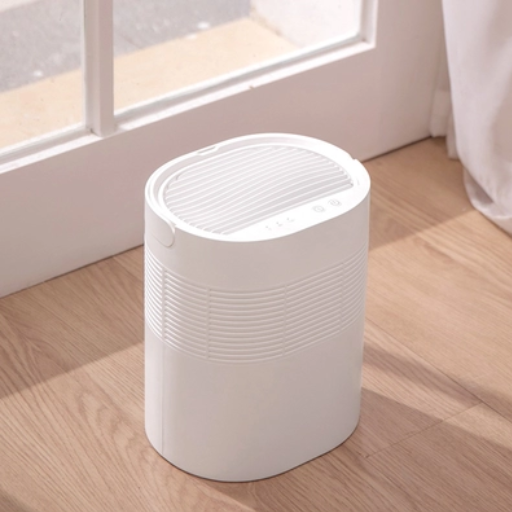
When choosing the best small dehumidifier for your home, consider a few key factors. First, assess the size of the room you need to dehumidify and select a model with a moisture removal capacity suited to that space. Look for compact and lightweight designs that fit well in smaller areas like bedrooms, bathrooms, or closets. Energy efficiency is also critical—opt for a dehumidifier that uses minimal power while maintaining effectiveness. A quiet operation is important, especially for use in living spaces. Finally, prioritize user-friendly features such as simple controls, an auto-shutoff function, and an easy-to-empty water tank. These characteristics ensure seamless functionality, comfort, and improved indoor air quality.
Evaluating Energy Star Ratings and Dehumidifier Features
When evaluating Energy Star ratings and dehumidifier features, I focus on energy efficiency and overall performance. An Energy Star certified unit ensures lower energy consumption, which helps reduce utility bills while maintaining eco-friendliness. I also prioritize features like adjustable humidity settings, a built-in timer, and easy-to-maintain components, as these add convenience and adaptability to my daily use. This approach ensures I choose a dehumidifier that meets my needs effectively and sustainably.
The Importance of Auto Shut-Off and Sleep Mode
Auto shut-off and sleep mode are invaluable features in modern dehumidifiers, enhancing both safety and efficiency. The auto shut-off function prevents water from overflowing by automatically turning off the device when the water tank is full, making it an essential safeguard for prolonged and unattended operation. This feature not only protects your home from potential water damage but also extends the longevity of the dehumidifier by preventing overuse.
Sleep mode, on the other hand, optimizes the device’s operation for quieter performance during nighttime use. Many advanced dehumidifiers in the market today operate at noise levels as low as 35 decibels in sleep mode, which is comparable to the sound level of a whisper or a quiet library. This ensures a peaceful environment, especially in bedrooms or shared living spaces, without compromising on the device’s efficiency.
Together, these two features contribute to a seamless user experience by addressing practical concerns like noise, safety, and energy management. For households looking to balance functionality with ease of use, dehumidifiers equipped with auto shut-off and sleep mode are an excellent investment.
Understanding Water Tank Capacity and Drain Hose Options
When it comes to understanding water tank capacity and drain hose options, I like to think of it in terms of convenience and efficiency. The water tank capacity determines how much moisture the dehumidifier can hold before it needs to be emptied—larger tanks mean less frequent emptying, which is great for busy households. On the other hand, a drain hose simplifies things by allowing continuous drainage directly into a sink or floor drain, so I don’t have to worry about emptying the tank at all. Choosing between the two really depends on how much hands-on maintenance I’m comfortable with and the setup of the space where the dehumidifier will be used.
Installation and Maintenance Tips for Your Bathroom Dehumidifier
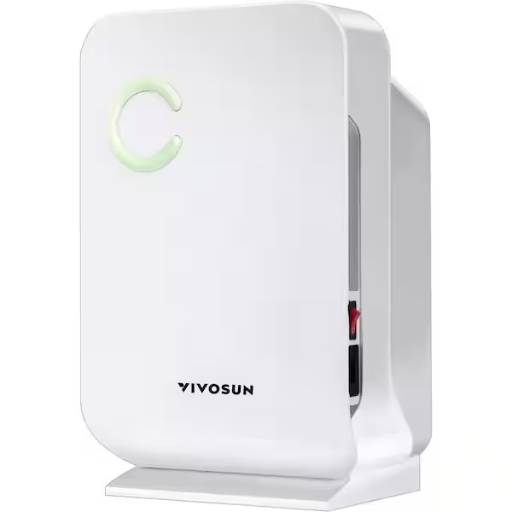
- Choose the Right Placement
Position the dehumidifier in an area with good airflow, ideally near the center of the bathroom or close to the source of moisture, such as the shower or bathtub. Ensure it is placed on a flat, stable surface.
- Follow the Manufacturer’s Instructions
Carefully read and adhere to the setup guidelines provided in the user manual. This ensures proper installation and maximizes your dehumidifier’s efficiency.
- Regular Cleaning
Clean the filter periodically to maintain optimal performance. Many models feature washable filters—remove and rinse them according to the instructions.
- Monitor Water Collection
For tank-based dehumidifiers, empty the water tank regularly to prevent overflow. If using a drain hose, check that it is securely connected and draining properly.
- Ventilation Matters
Although the dehumidifier reduces moisture, ensure the bathroom has adequate ventilation, such as using an exhaust fan, to support moisture control.
- Inspect and Maintain
Routinely check for any buildup of dust or debris and wipe the exterior with a damp cloth. Regular maintenance will extend the lifespan of your device.
By following these straightforward steps, you can keep your bathroom dehumidifier working efficiently and maintain a fresh, dry space.
Proper Placement for Optimal Dehumidifier Performance
Positioning your dehumidifier correctly can significantly enhance its effectiveness and efficiency. Start by placing the device in the most humid area of your bathroom, such as near the shower, bathtub, or sink, where moisture levels are typically highest. Ensure that the device is positioned at least 6 to 12 inches away from walls or furniture to allow for proper air circulation.
Recent studies show that an unobstructed airflow is crucial for maximizing a dehumidifier’s performance, with blocked vents reducing efficiency by up to 30%. Avoid placing the unit directly on plush surfaces like carpets, as these can absorb residual moisture and inhibit airflow.
Humidity levels play a key role in determining the optimal operation of your dehumidifier. For bathrooms, maintaining a relative humidity between 40% and 60% is ideal for comfort and mold prevention. Many modern dehumidifiers come equipped with built-in hygrometers to help monitor and adjust settings automatically, ensuring consistent performance.
By strategically positioning your dehumidifier and adhering to these guidelines, you can tackle excessive moisture effectively, creating a healthier and more comfortable bathroom environment.
Regular Maintenance to Prolong Your Dehumidifier’s Lifespan
Regular upkeep is essential to ensure optimal performance and extend the lifespan of your dehumidifier. Begin by cleaning the air filter every two weeks, or as recommended by the manufacturer. Dust and debris can accumulate over time, restricting airflow and reducing efficiency. Some models feature washable filters, which can be rinsed and reused, while others may require replacements periodically.
Empty and clean the water collection tank daily or whenever full. Stagnant water can promote bacterial growth and unpleasant odors. Use a gentle detergent or vinegar solution to sanitize the tank at least once a month. Additionally, inspect the tank for cracks or leaks to avoid water spillage and damage.
For dehumidifiers with a continuous drain option, regularly check the drain hose for blockages or kinks to ensure consistent water flow. If your unit uses coils to remove moisture, examine these components at least quarterly. Dirty coils can reduce efficiency and may need gentle cleaning with a soft brush or vacuum attachment.
Maintaining the correct environmental conditions is also key. Operate your dehumidifier in spaces with room temperatures between 41°F and 90°F, as extreme cold can cause frost buildup on the coils, hindering functionality. If frost does develop, allowing the unit to defrost completely before restarting can prevent long-term damage.
Lastly, schedule a professional inspection annually to identify any underlying mechanical issues. Addressing small problems promptly can prevent costly repairs in the future, ensuring that your dehumidifier continues to run efficiently for years to come. By integrating these maintenance practices into your routine, you can maximize the value and performance of your appliance.
How to Safely Use a Dehumidifier in a Small Bathroom
Using a dehumidifier in a small bathroom can effectively manage excess moisture, prevent mold growth, and enhance air quality. To ensure safe and efficient operation, follow these detailed guidelines:
- Select the Right-Sized Dehumidifier
Choosing a compact, energy-efficient dehumidifier designed for small spaces is crucial. When purchasing, consider the moisture removal capacity (measured in pints per day) that aligns with your bathroom size. Models with a capacity of 30–50 pints per day are typically suitable for spaces with significant moisture buildup.
- Proper Placement is Key
Position the dehumidifier in a central, unobstructed area to maximize airflow and moisture extraction. Avoid placing it directly in the shower area or near water sources where it could be splashed. Keeping it at least 12 inches away from walls and furniture ensures optimal ventilation and prevents overheating.
- Monitor and Maintain Optimal Humidity Levels
The ideal indoor humidity level is between 30-50%. Many modern dehumidifiers are equipped with built-in hygrometers, which automatically adjust settings to maintain this range. Over-dehumidifying can make the air excessively dry, while under-dehumidifying may be insufficient to prevent mold and mildew.
- Ensure Adequate Ventilation
To further boost efficiency, use the dehumidifier alongside proper ventilation strategies. Keep the bathroom fan running during and after showers, or slightly crack a window if possible. This ensures an effective exchange of fresh air to complement the dehumidifier’s work.
- Regularly Empty and Clean the Water Tank
Empty the tank daily or as needed to prevent water overflow. Additionally, clean the tank weekly with a mild detergent or a solution of water and white vinegar to prevent bacteria and mold buildup inside the unit.
- Routine Filter Maintenance
Dehumidifiers with air filters improve air quality by capturing dust and allergens. Clean or replace the filter according to the manufacturer’s guidelines—typically every 2-4 weeks. Consistent maintenance improves efficiency and extends the lifespan of the appliance.
- Energy Efficiency and Safe Operation
Look for ENERGY STAR®-rated dehumidifiers, as they consume less electricity while maintaining effective moisture control. Ensure the electrical cord and outlet are dry at all times to avoid potential hazards. Always plug your unit into a grounded outlet, and unplug it when cleaning or not in use.
By adhering to these detailed steps, you can safely and effectively use a dehumidifier in your small bathroom to achieve a fresher, more comfortable environment while protecting the space from moisture-related issues.
Benefits of Using a Dehumidifier with Auto in Your Bathroom
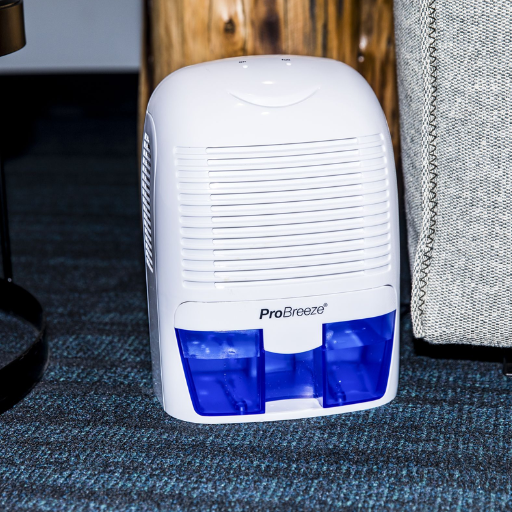
- Improved Air Quality
An auto-setting ensures the dehumidifier maintains an optimal humidity level, reducing mold, mildew, and allergens that thrive in damp environments. This creates a fresher and healthier bathroom atmosphere.
- Convenience and Efficiency
The automatic mode monitors and adjusts humidity levels without manual intervention, saving time and effort while maximizing energy efficiency.
- Prevention of Structural Damage
Excess moisture can harm walls, ceilings, and fixtures over time. A dehumidifier helps prevent peeling paint, warped wood, or rusted fixtures, extending the lifespan of your bathroom materials.
- Odor Reduction
By removing excess moisture, it minimizes the musty odors often associated with damp spaces, making your bathroom more pleasant and inviting.
How Auto Defrost Features Work in Dehumidifiers
Auto defrost is a critical feature in dehumidifiers, especially for units operating in colder climates or areas prone to low temperatures. When the temperature drops, frost can form on the dehumidifier’s coils, hindering its ability to extract moisture efficiently. The auto defrost function ensures that the dehumidifier remains operational by periodically stopping the compressor and using the fan to thaw the accumulated ice.
This feature typically activates when the system detects that the internal coil’s temperature has dropped below a certain threshold, often around 41°F (5°C). For example, modern dehumidifiers use thermistors or temperature sensors to monitor coil conditions in real-time. Once frost buildup is detected, the system enters defrost mode, momentarily halting moisture extraction until the ice is cleared. Advanced dehumidifier models can complete this process in as little as 10-15 minutes, ensuring minimal disruption to overall performance.
Auto defrost improves energy efficiency by maintaining optimal operation without the need for manual intervention. It also prolongs the lifespan of the dehumidifier by preventing potential damage caused by frozen coils. This makes dehumidifiers with auto defrost capabilities reliable and effective in both residential and commercial environments where temperature fluctuations are common.
Keeping Your Bathroom Safe with Auto Shut-Off Technology
Auto shut-off technology is a critical innovation designed to enhance safety and energy efficiency in bathroom appliances. This feature automatically powers off devices, such as space heaters or hair dryers, when specific conditions are met, like overheating, prolonged inactivity, or tipping over. Not only does this prevent potential fire hazards, but it also helps conserve energy, contributing to cost savings over time.
According to industry data, bathroom heaters with auto shut-off technology reduce the risk of overheating-related accidents by over 30% compared to models without this feature. Furthermore, appliances equipped with this functionality often meet or exceed stringent safety certifications, ensuring dependable protection for your home. For example, devices tested for UL or ETL certification are engineered to stop operation immediately if abnormal conditions occur, offering peace of mind for users.
Another key benefit is the integration of sensors in more advanced models, which detect environmental changes, such as increased humidity or temperature fluctuations. These sensors enhance the responsiveness of the auto shut-off mechanism, making such appliances ideally suited for moisture-prone areas like bathrooms. By choosing products with this technology, you can reduce risks while maintaining a comfortable and safe environment for daily routines.
Maintaining Perfect Humidity Levels with Automated Systems
Automated humidity control systems have emerged as essential tools in creating balanced indoor environments. These systems are designed to maintain ideal humidity levels around 30% to 50%, as recommended by health and safety standards. Keeping indoor humidity within this range is crucial for inhibiting mold growth, reducing dust mites, and improving respiratory health for occupants.
Modern technologies integrated into these systems ensure precise and intelligent moisture regulation. For instance, many systems now feature smart humidity sensors that continuously monitor indoor air conditions and adjust operation accordingly. Data indicates that homes equipped with such technology can reduce energy consumption by up to 20%, as the systems optimize performance and avoid unnecessary overuse.
Furthermore, the relationship between proper humidity levels and energy efficiency cannot be overstated. High humidity forces HVAC systems to work harder, leading to increased energy costs. Automated dehumidifiers or humidifiers can alleviate this burden by interacting seamlessly with building management systems, ensuring comfortable conditions year-round. For homeowners and businesses alike, investing in these advanced solutions promotes better health, enhances energy efficiency, and ensures long-term protection of property.
Reference Sources
-
“Environmental Management of Pediatric Asthma”1:
- Key Findings: This study highlights the importance of controlling indoor humidity to manage asthma triggers, such as mold and mildew, which thrive in humid environments like bathrooms. It recommends using dehumidifiers as part of environmental interventions to reduce moisture and improve air quality.
- Methodology: The research integrates environmental health guidelines with pediatric asthma management, focusing on practical interventions for homes and other indoor spaces.
-
“Solving Mould and Condensation Problems: A Dehumidifier Trial in a Suburban House in Britain”3:
- Key Findings: This study conducted a 28-night trial of a dehumidifier in a suburban home to address condensation and mold issues. The dehumidifier removed an average of 680ml of water per night, significantly reducing condensation and improving indoor air quality. The study found that using a dehumidifier was a cost-effective solution compared to other methods like insulation or heat-exchange ventilators.
- Methodology: The trial measured water extraction, energy consumption, and user satisfaction, demonstrating the dehumidifier’s effectiveness in maintaining a healthier indoor environment.
Frequently Asked Questions (FAQs)
Q: What is a small dehumidifier for bathroom and why do I need one?
A: A small dehumidifier for bathroom is a compact device designed to remove excess moisture from the air in a bathroom, preventing mold and mildew growth. It helps maintain a comfortable and healthy environment by reducing humidity levels.
Q: How do I choose the best small dehumidifier for my bathroom?
A: When selecting a dehumidifier for your bathroom, consider factors such as size, capacity, energy efficiency, and additional features like a dehumidifier with drain hose or 7 colors led light. Ensure that it is suitable for small rooms and can effectively reduce humidity.
Q: Can a dehumidifier for home be used in a bathroom?
A: Yes, a dehumidifier for home can be used in a bathroom if it is appropriately sized. However, for optimal performance, it is recommended to use a portable small dehumidifier for bathroom specifically designed for smaller spaces.
Q: What are the benefits of using an electric dehumidifier in the bathroom?
A: An electric dehumidifier in the bathroom helps reduce moisture, preventing mold and mildew, and maintaining better air quality. It also helps dry towels and clothes faster, making the bathroom more comfortable.
Q: Is a dehumidifier with drain hose necessary for a bathroom?
A: While not necessary, a small dehumidifier with drain hose can be convenient in a bathroom as it allows continuous operation without needing to empty the water tank frequently, especially in high humidity areas.
Q: Can I use a dehumidifier for basement in other parts of my home?
A: Yes, a dehumidifier for basement can be used in other parts of the home, including bathrooms and small rooms, as long as it is appropriately sized for the area. It helps control humidity throughout the home.
Q: What is the difference between a mini dehumidifier and a regular dehumidifier?
A: A mini dehumidifier is smaller and designed for small rooms like bathrooms or closets, while a regular dehumidifier is larger and suitable for bigger spaces. Mini dehumidifiers are more portable and consume less energy.
Q: How can a dehumidifier with built-in pump benefit a bathroom?
A: A dehumidifier with built-in pump can automatically drain water to a higher location, which is useful in a bathroom with limited drainage options, ensuring continuous operation without manual intervention.
Q: Are there energy-efficient options for a safe dehumidifier in the bathroom?
A: Yes, many dehumidifiers are designed to be energy-efficient, ensuring they use less electricity while effectively reducing humidity. Look for models with energy-saving features to keep utility costs low.
Q: How often should I empty the water tank of a small dehumidifier for bathroom?
A: The frequency of emptying the water tank depends on the humidity level and the dehumidifier’s capacity. On average, it may need to be emptied every one to two days, but using a dehumidifier with drain hose can eliminate this need.


